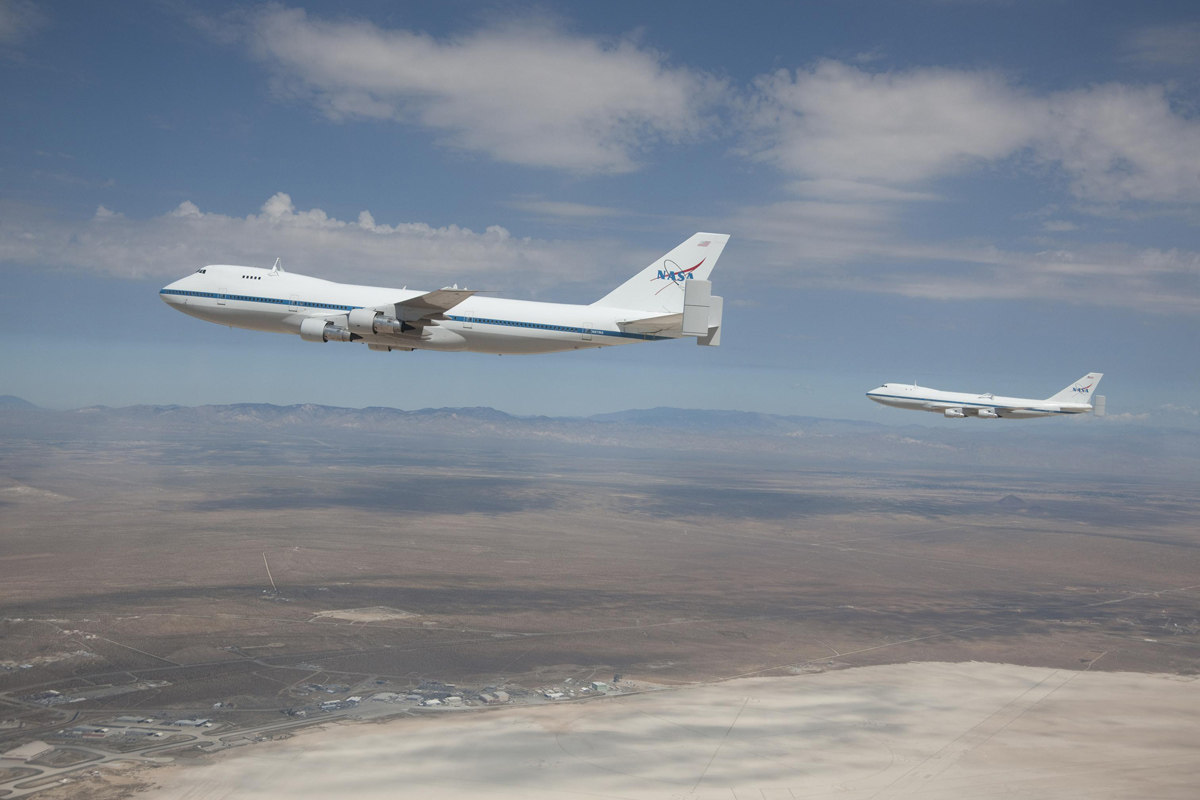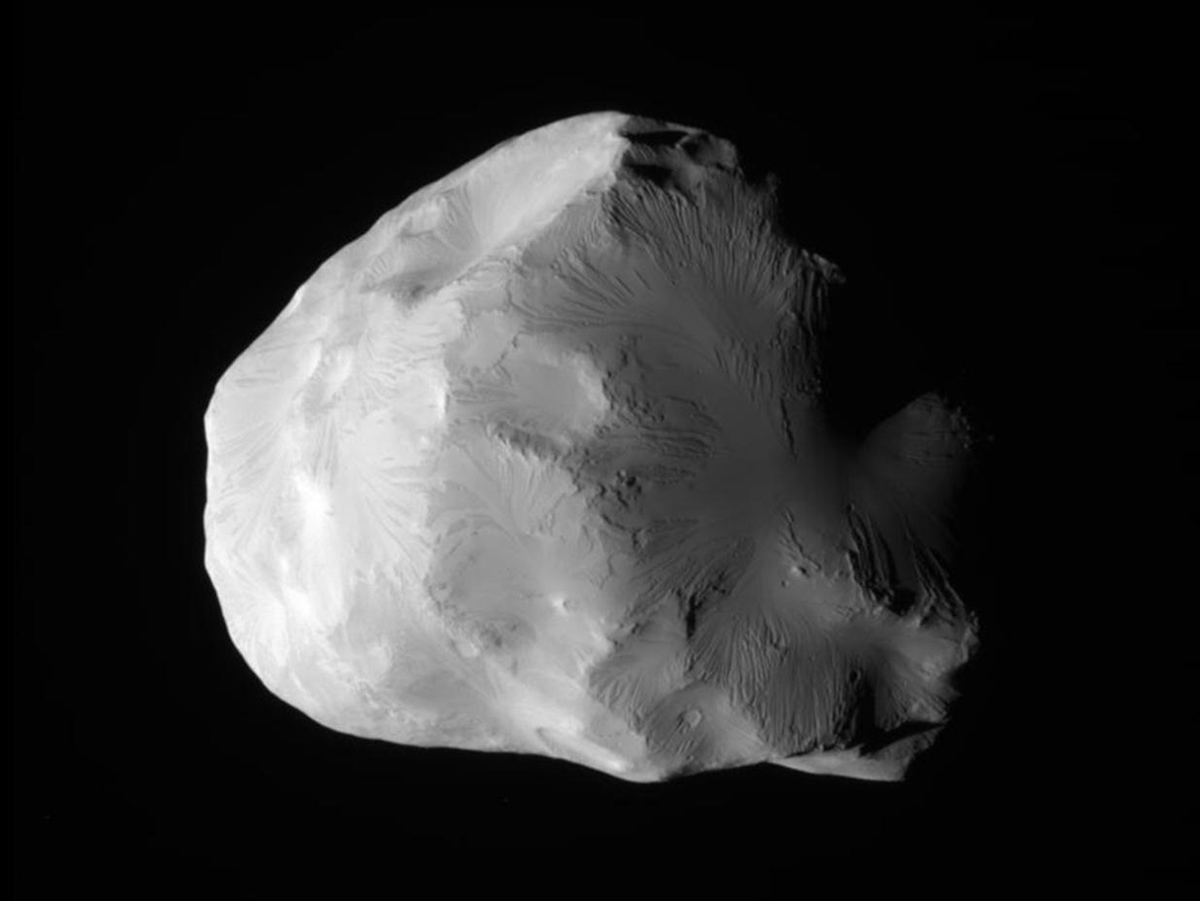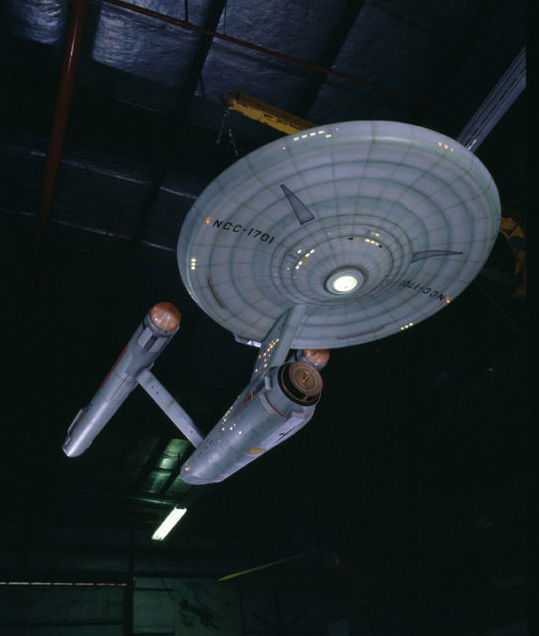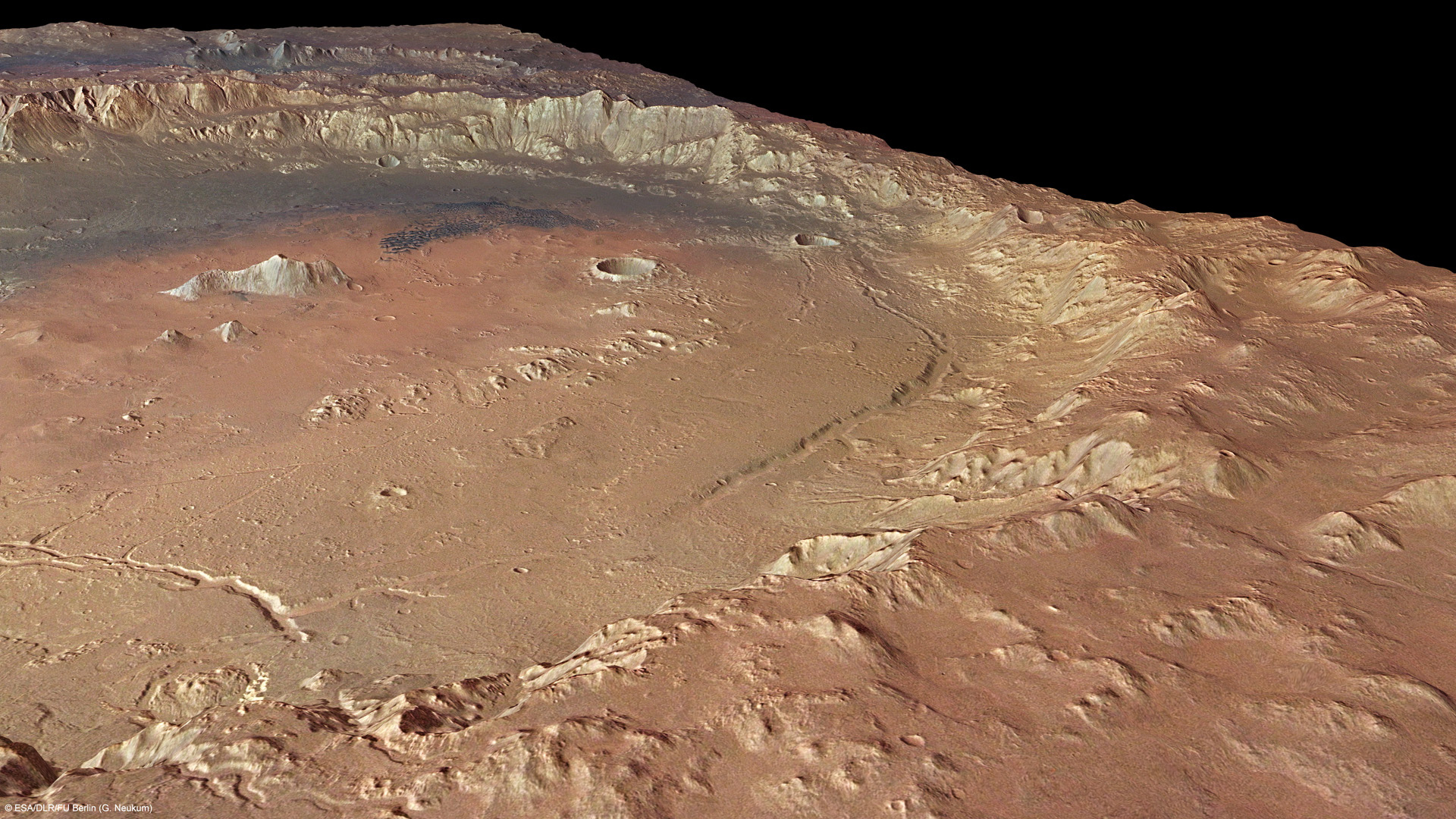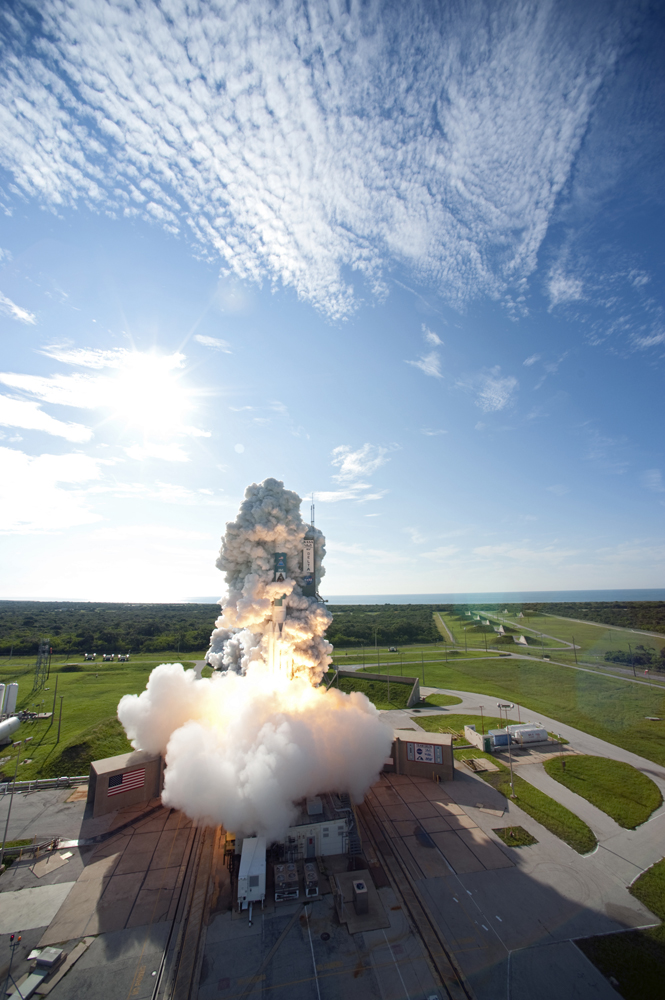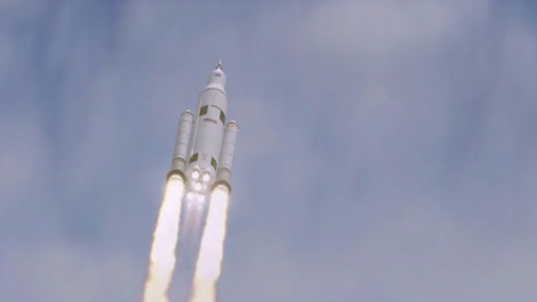Image of the Day: September 2011
GRAIL to the Moon
Thursday, September 1, 2011: At Cape Canaveral in Florida, half of the clamshell-shaped Delta payload fairing closes around NASA's twin Gravity Recovery and Interior Laboratory spacecraft. Scheduled to launch September 8, 2011, the two spacecraft will fly in tandem orbits around the moon for several months to measure its gravity field.
— Tom Chao
Red-burning Galaxies Give You So Much More
Friday, September 2, 2011: Researchers from the University of Tokyo and the National Astronomical Society of Japan (NAOJ) have identified the location of red star-forming galaxies around a galaxy cluster situated four billion light years distant from Earth. Such "red-burning galaxies" are in a transitional phase from a young generation of galaxies to an older one, and may demonstrate the dramatic evolution of galaxies in the environment surrounding the cluster. The main image shows a panoramic view of the CL0939+4713 cluster located 4 billion light years away from Earth. Top right: Close-up view of the central cluster region. Bottom right: Example of the concentration of red-burning galaxies, marked with red squares.
— Tom Chao
Side by Side
Monday, September 5, 2011: NASA's modified Boeing 747 Shuttle Carrier Aircraft briefly flew in formation over the Edwards Air Force Base Test Range on Aug. 2, 2011. The aircraft were scheduled to be in the air on the same day, NASA 911 (foreground) on a flight crew proficiency flight, and NASA 905 (rear) on a functional check flight following maintenance operations. NASA uses these aircraft to ferry space shuttle orbiters from landing sites such as Edwards Air Force Base in California back to Kennedy Space Center in Florida. Struts for attaching the space shuttle orbiters protrude from the tops of the aircraft.
— Tom Chao
On the Border
Tuesday, September 6, 2011: An astronaut in the International Space Station caught this nighttime view of northern India and northern Pakistan. The capital cities of Islamabad, Pakistan and New Delhi, India, glow the brightest at bottom and top of this image, respectively. Between them lies another city, Lahore, with numerous highways snaking from it. The distinct orange line just above Lahore that divides the image in half is the border zone between the two countries. At left, the grayish area contains the partly cloud-covered Himalayas. In the background, airglow hangs 50 miles (80 kilometers) above the Earth.
— Tom Chao
I Knew the Ice Queen
Wednesday, September 7, 2011: NASA's Cassini spacecraft made a close pass of Saturn's icy moon Helene on June 18, 2011. Cassini flew within 4,330 miles (6,968 kilometers) of Helene's surface. It was the second closest approach to Helene of the mission. Cassini passed from Helene's night side to the moon's sunlit side. It also captured images of the Saturn-facing side of the moon in sunlight, a region that was only illuminated by sunlight reflected off Saturn the last time Cassini was close, in March 2010.
— Tom Chao
Star Trek Lives!
Thursday, September 8, 2011: Today marks the 45th anniversary of "Star Trek," the TV series that debuted on September 8. 1966, and went on to spawn an quadrant-sized quantity of spin-offs, movies, and merchandise. This photograph shows the original model of the fictional spaceship U. S. S. Enterprise (NCC-1701) that appeared in the television series. First conceptualized in 4-inch and 3-foot versions, the final model stretches 11 feet, primarily constructed out of poplar wood, vacu-formed plastic, and rolled sheet metal tubes. Paramount donated the model to the National Collection of the Smithsonian Institution in 1974. It currently resides in the National Air and Space Museum (no longer suspended as shown). To see it, visitors must go to the lower level of the museum and venture to the very rear of the gift shop, where it sits amongst the sale items. Judging from comments posted on online forums, some fans feel the restored paint scheme does not reflect the appearance of the model when originally filmed.
— Tom Chao
Blast Them!
Friday, September 9, 2011: The European Southern Observatory tested its new Wendelstein laser guide star unit at the Allgäu Public Observatory in southwestern Bavaria, Germany, on August 18, 2011. The observatory shot a powerful laser beam into the atmosphere while, coincidentally, lighting flashed in the distance as the photographer recorded the test. The laser emits a 20-watt beam, but the power in a bolt of lightning peaks at a trillion watts, albeit for just a fraction of a second. ESO commented that the photograph provided "a very visual demonstration of why ESO's telescopes are in Chile, and not in Germany."
— Tom Chao
Breaking space news, the latest updates on rocket launches, skywatching events and more!
Holden' On
Monday, September 12, 2011: Holden crater is 87 miles (140 km across). It is located in the southern highlands of Mars. The image was acquired by ESA's Mars Express spacecraft on August 15, 2009. Neighboring Eberswalde crater, at the top left of this image, shows distinct traces of a delta, suggesting that a lake of liquid water used to exist there.
— Tom Chao
To the Moon, Grail!
Tuesday, September 13, 2011: The Delta 2 Heavy rocket carrying NASA’s twin Gravity Recovery and Interior Laboratory (GRAIL) mission blasts off from Space Launch Complex 17B on Cape Canaveral Air Force Station in Florida. The spacecraft launched at 9:08:52 a.m. EDT on Sept. 10, 2011, en route to lunar orbit, where they will study the moon's gravity.
— Tom Chao
Sail Along Silvery Moon
Wednesday, September 14, 2011: Pete Murray caught the Harvest Moon on September 11, 2011, at Dana Point Harbor, CA, during the Tall Ships Parade.
— Tom Chao
Almost Real
Thursday, September 15, 2011: A still from a NASA-produced animation imagines the new Space Launch System rocket flying through the clouds to space.
— Tom Chao
Join our Space Forums to keep talking space on the latest missions, night sky and more! And if you have a news tip, correction or comment, let us know at: community@space.com.


